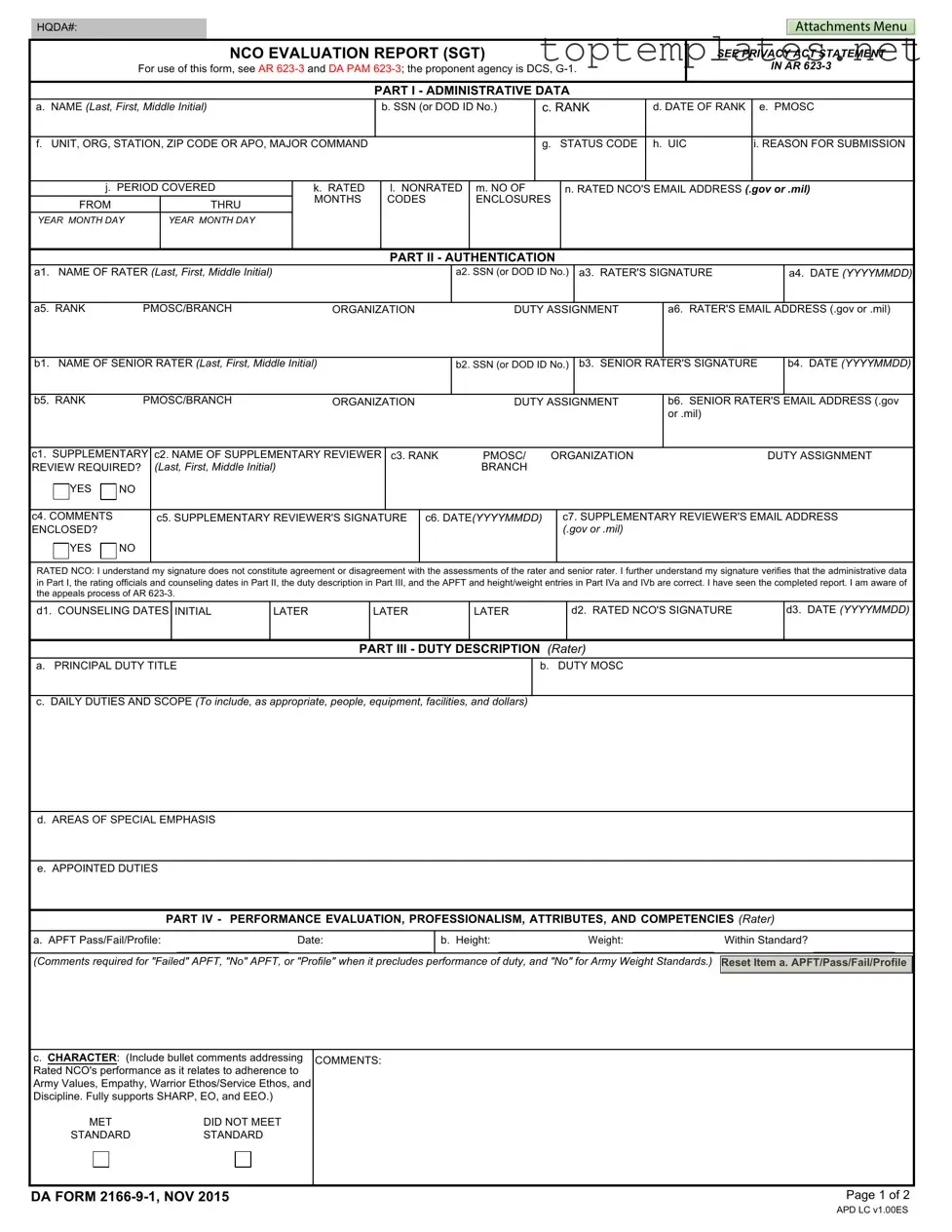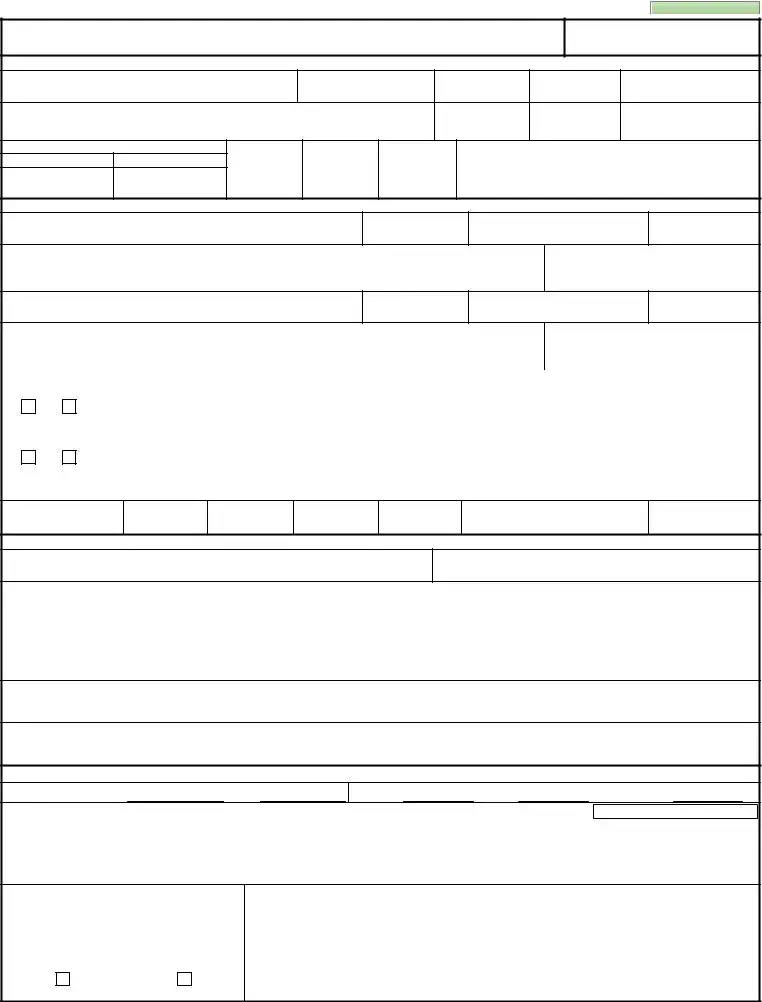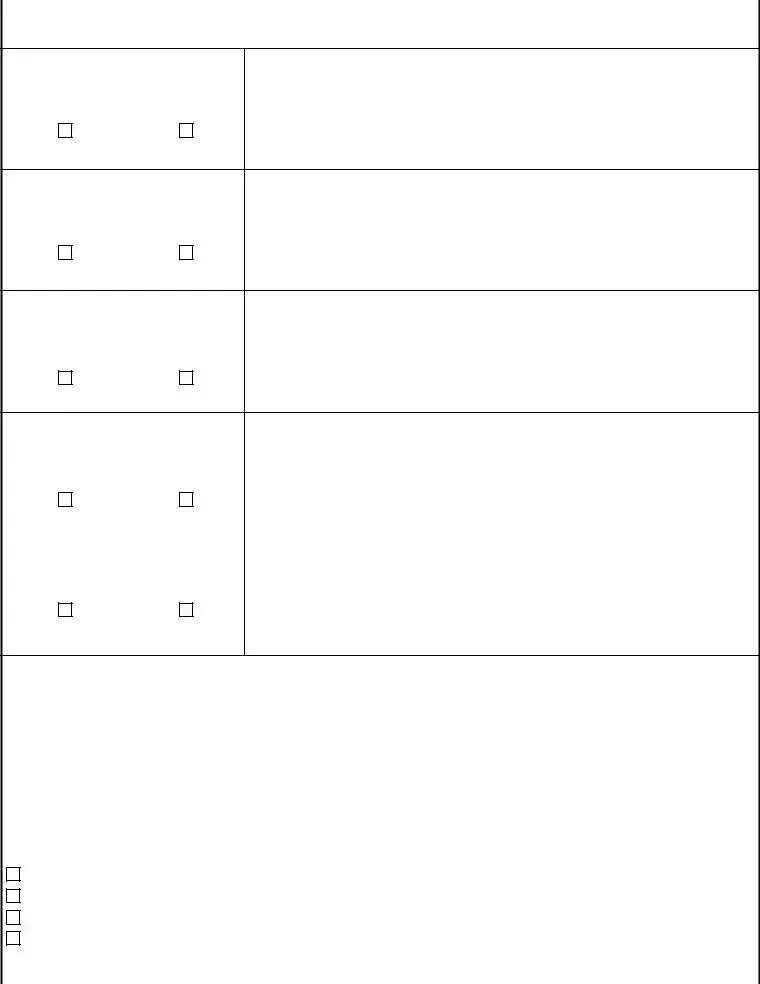What is the purpose of the DA Form 2166-9-1?
The DA Form 2166-9-1, known as the NCO Evaluation Report (SGT), is designed to evaluate the performance and potential of non-commissioned officers (NCOs) in the rank of Sergeant (SGT) within the United States Army. Its primary purpose is to provide a detailed record of an NCO's duties, responsibilities, and performance, serving as a crucial tool for career progression, promotions, and developmental opportunities. Furthermore, it helps maintain a high level of professionalism and effectiveness within the Army by ensuring NCOs are evaluated systematically and fairly.
Who fills out the DA Form 2166-9-1, and what are the different parts of the form?
The DA Form 2166-9-1 is completed by multiple individuals, reflecting a comprehensive evaluation process. The form is divided into several sections:
- Part I contains administrative data about the NCO being evaluated, including name, rank, and unit.
- Part II is for authentication and includes information about the rater, senior rater, and any supplementary reviewer.
- Part III outlines the rated NCO's duty description as entered by the rater.
- Part IV involves the performance evaluation, where the rater assesses the NCO's professionalism, attributes, and competencies.
- Part V reflects the senior rater's evaluation of the NCO's overall potential. Each section must be completed carefully to ensure a fair and accurate assessment of the NCO's performance and potential.
How does the DA Form 2166-9-1 impact career progression for NCOs?
The DA Form 2166-9-1 plays a crucial role in the career progression of NCOs. The evaluations recorded on this form affect decisions on promotions, assignments, additional training, and other career development opportunities. A strong performance evaluation can open doors to advanced leadership positions and specialized training, whereas a weaker evaluation might necessitate areas for improvement and development. This form serves not only as a record of past performance but also as a guide for future career growth.
Can an NCO dispute the evaluation given on the DA Form 2166-9-1?
Yes, an NCO has the right to dispute their evaluation. The Army provides a formal appeals process for those who believe their evaluation contains errors, injustices, or inaccurate information that could adversely affect their career. To initiate an appeal, the NCO must provide supporting documentation and a clear rationale for why the evaluation is deemed incorrect or unfair. It's important for NCOs to familiarize themselves with the specific procedures and deadlines for filing an appeal, as outlined in AR 623-3.
What happens after the DA Form 2166-9-1 is completed and submitted?
Once the DA Form 2166-9-1 is completed and all necessary signatures are obtained, it's submitted through the appropriate channels within the Army's chain of command. The completed form becomes part of the NCO's official military personnel file (OMPF). The evaluations on this form are used in consideration for promotions, assignments, and other personnel management decisions. Additionally, the form serves as a tool for identifying strengths and areas for improvement, helping to guide the NCO's career development and training needs.


